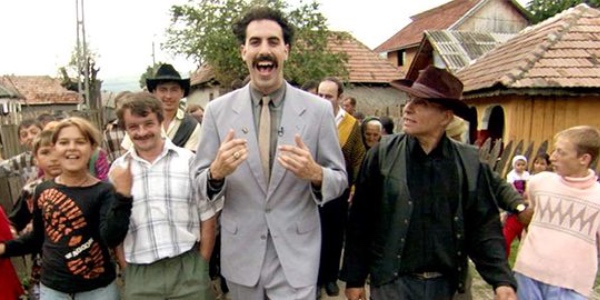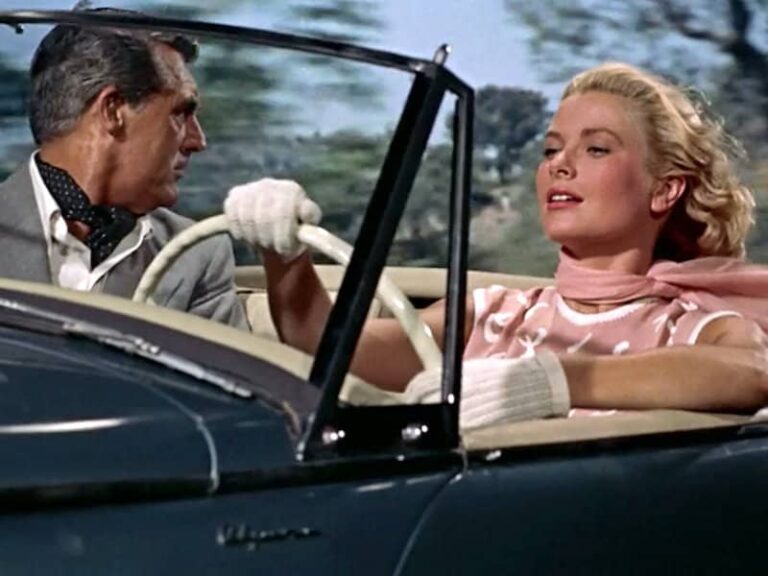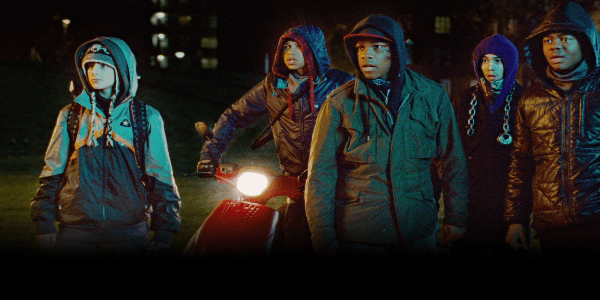KILL IT AND LEAVE THIS TOWN: A Markedly Somber & Mesmerizing Animated Journey
Over the course of his filmmaking career, Mariusz Wilczynski has been creating animated shorts. However, at the time of making shorts, Wilczynski was also trying to finish his first feature-length film.
Fifteen years in the making, Mariusz Wilczynski’s debut feature-length film, Kill It and Leave This Town, is starkly animated, composed of frazzled, curly sketches on lined paper. The film’s setting is faintly reminiscent of Lodz, an industrial Polish city where Wilczynski grew up during the 1970s. Grim, poetic, and illusionary, Kill It and Leave This Town captures the monotony, the apprehension, the brutality, and the heartbreak associated with existing, courtesy of Wilczynski’s personal woe and unbounded imagination.
A Comfortless & Surreal Animated Film That Lingers In Your Mind
The setting is a dreary, smoke-hued industrial town with factories on every corner, and with only isolated bursts of color — as seen in a distant neon sign or a simple ribbon. The local townsfolk, populated by bumptious shop owners, mercurial parents, and overly distracted employees, are uncaring, impatient, or self-seeking. The inky smoke from the factories blackens the sky and the grimy streets are littered with trash, confining the inhabitants (and viewers) to a town bereft of any beauty. The film immediately evokes an atmosphere of dread, disaffection, and melancholy.
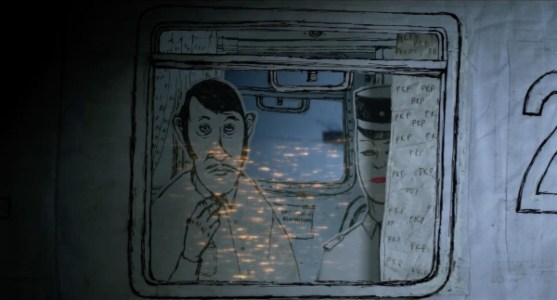
Grieving over the death of his parents, Wilczynski makes it so his parents reside in this lifeless town. Wilczynski himself emerges in the film as a naked giant reliving painful memories and creating new ones to mollify his feelings of remorse and regret.
In a modestly devastating scene, Wilczynski visits his elder mother (Barbara Krafftowna) in the hospital, where his curtness is getting in the way of her desire to spend more time with him before she passes. Regrettably, moments later, she’s gone — gone before he could ever show her his precious film. In a later, off-putting scene, viewers watch in close-up as the babbling mortician sews up his mother’s corpse. In another scene, Wilczynski’s father is trying to show a fairytale (“How Fiki Miki Mouse Sailed Across the Seas and Oceans From America”) on a slide projector, and he becomes increasingly upset when it malfunctions. The placement of the aforementioned scenes is random, as is the remaining collection of vignettes that transpire throughout Wilczynski’s unremittingly doleful and tenebrous project.
There’s a vignette following a young boy named Janek, whose Dad (Andrzej Chyra) takes him to the seaside one afternoon, leaving his mother (Krystyna Janda) at home. When they neglect to call her to tell her they’re fine, the flustered mother calls the seaside train station for assistance, thinking something bad happened to them. The scenes including Janek exhibit the parental fear of losing your child while exposing the paucity of concern from those who are greatly consumed by their self-serving interests and, in this case, vanity.
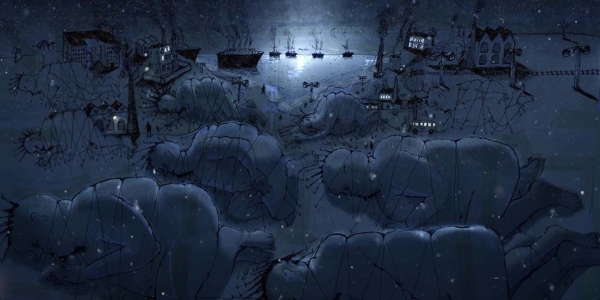
The transitions between the separable vignettes are spontaneous and seemingly unplanned, although the fact remains that Wilczynski has been planning this film for years. The tattered paper in which the scratchy illustrations were drawn on speaks volumes for Wilczynski’s return to traditional animation styles and intensifies his craving for all things surreal, majestic, pitiful, and barbaric. The film assumes a raw, hard-edged visual aesthetic, which enlivens what essentially is a dizzying trip into Wilczynski’s distressed mind.
Visually, Kill It and Leave This Town hinges on surrealism. A boat sailing on the deep blue sea is revealed to be a toy boat in a bathtub, an elaborate realization that prompts us to consider our own perception of situations and objects. There are also oversized birds with bloody beaks who keep human beings as pets, painting an image that’s hard to shake. Another sequence involving a school of fish in a barrel becomes palpably repulsive as the fish are substituted by shrunken humans — and, in a similar fashion to what’s done to fish in times of preparation, the humans are then gutted and sliced. This scene could easily be construed as a vivid anti-meat message, or it could just be Wilczynski’s mind going to extraordinarily warped places. After all, our imagination often reflects our existential fears — in this instance, being treated as something less than human. All things considered, the kernel of anguish that pervades the film stems from Wilczynski’s crippling sorrow and anxiety.
A Transfixing Journey Of Grief & Rage
Kill It and Leave This Town is a deeply personal affair disguised as a vast, unnerving meditation on existence. There are moments where characters are arguing or rambling about their insecurities, vanity, or grief. But these interactions, while sometimes meandering or exhausting, are enhanced by the fanciful black-and-white animation that occasionally gushes with red to imitate the oozing of blood.
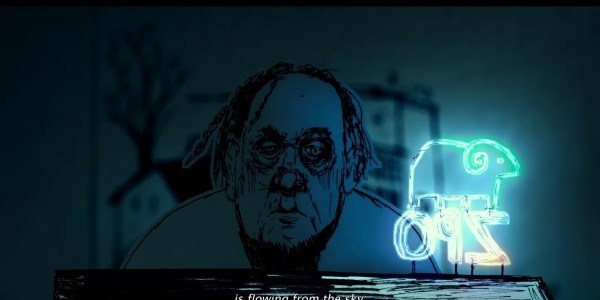
Kill It and Leave This Town is an intricate work of passion and rage that took years to craft so hauntingly. The film radiates Wilczynski’s grief and anger and does so with profound introspection and visual symbolism. The final minutes of the film are especially soul-stirring, as Wilczynski, still in giant form, watches as his parents sail away, potentially conveying how memory and imagination can wound us as much as it can heal us in times of grief.
At one point, Wilczynski mentions that his parents are gone, but they aren’t dead: “They didn’t die, they are alive in my imagination.” Despite the durability and benefits of memory and limitless imagination, Wilczynski’s imagination is rather lugubrious; the world he dreams up is drenched in agony, thus making for an unsavory experience, but one that is still worth beholding even when the imagery is thoroughly unsettling.
Whilst the animation is remarkably somber and wiry, Tadeusz Nalepa’s (who has now tragically passed away) rock-centric score is appropriately outré, serving as a splendid addition to a film that naturally stands out for being unabashedly candid, surreal, and unrepressed. The sporadic electric guitar riffs are oddly alluring and transcendently poignant, as is everything about the film.
Conclusion: Kill It and Leave It
Mariusz Wilczynski’s Kill It and Leave This Town is art in its purest form; sincere, evocative, and intimate. Kill It and Leave This Town is one of the most unique films of the year. That being said, it’ll require patience from the viewer to fully unpack everything about this inexplicably hypnotic trip that goes in many unexpected directions without knowingly reaching a concrete destination.
Once you enter the unusually cruel world of Kill It and Leave This Town, a part of you may want to flee, but Wilczynski has poured his heart, soul, and artistic talents into the film, making Kill It and Leave This Town a cinematic act of surreal artistry and deep-seated passion that’s nearly impossible to forget.
Have you seen Kill It and Leave This Town? If not, are you interested in seeing it now? Let us know in the comments below!
Kill It and Leave This Town made its premiere at the Berlin International Film Festival on February 22, 2020. Outsider Pictures plans on distributing the film in the U.S.
Watch Kill It and Leave This Town
Does content like this matter to you?
Become a Member and support film journalism. Unlock access to all of Film Inquiry`s great articles. Join a community of like-minded readers who are passionate about cinema – get access to our private members Network, give back to independent filmmakers, and more.
Join now!

